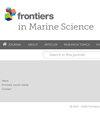揭示印度河下游微量元素的浓度:对水生生物和人类健康的风险
IF 3
2区 生物学
Q1 MARINE & FRESHWATER BIOLOGY
引用次数: 0
摘要
微量元素(CTEs)的浓度是世界范围内一个重要的环境问题。本研究利用电热原子吸收光谱法(ETAAS)和火焰原子吸收光谱法(FAAS)分析了印度河下游(LIR)水体、沉积物、鱼(Cirrhinus mrigala)组织和大型植物中的CTE水平。研究表明,CTE范围砷(As, 58.7 ~ 112.1 μg/L)、铅(Pb, 59.9 ~ 95.6 μg/L)、镉(Cd, 3.8 ~ 8.1 μg/L)、镍(Ni, 40.9 ~ 63.4 μg/L)、锌(Zn, 590.7 ~ 847.6 μg/L)和水参数(温度、pH、COD、BOD、浊度、碱度)均超过WHO(世界卫生组织)可接受限值。对鱼组织中CTEs (mg/kg干基)进行了分析,As、Cd、Cr、Cu、Hg、Ni、Zn的积累顺序为:肝脏;吉尔和gt;肌肉。相反,银和铅在鳃中的含量高于肝脏(鳃&;gt;肝脏和gt;肌肉)。利用EDTA提取沉积物负荷对CTEs的生物利用度进行预测,发现As、Cd和Zn是LIR中生物利用度最高的元素。健康风险评估表明,鱼类中cte的存在可能对人类健康造成潜在的不利影响。该研究强调了受影响地区食用鱼类带来的重大生态和健康问题,并指出了非致癌效应的高风险。这些见解对信德省的决策者和利益相关者管理和减少微量元素污染至关重要。本文章由计算机程序翻译,如有差异,请以英文原文为准。
Unveiling concentrations of trace elements in the Lower Indus River: risks to aquatic life and human health
Concentration of trace elements (CTEs) is a significant environmental concern worldwide. This study assessed CTE levels in the Lower Indus River (LIR) by analyzing CTEs in water, sediments, tissues of fish (Cirrhinus mrigala ), and macrophytes using electrothermal atomic absorption spectrometry (ETAAS) and flame atomic absorption spectrometry (FAAS). The study shows that CTE range—arsenic (As, 58.7–112.1 μg/L), lead (Pb, 59.9–95.6 μg/L), cadmium (Cd, 3.8–8.1 μg/L), nickel (Ni, 40.9–63.4 μg/L), and zinc (Zn, 590.7–847.6 μg/L)—and water parameters (temperature, pH, COD, BOD, turbidity, and alkalinity) exceeded WHO (World Health Organization) acceptable limits. The CTEs (mg/kg dried basis) were analyzed in fish tissues, and As, Cd, Cr, Cu, Hg, Ni, and Zn have the following accumulation order: liver > gill > muscle. In contrast, Ag and Pb were present in higher amounts in gills than in the liver (gill > liver > muscle). Prediction of bioavailability of CTEs, with the extraction of sediment load with EDTA, revealed that As, Cd, and Zn were among the most bioavailable elements in the LIR. Health risk assessment indicated that the presence of CTEs in the fish could pose potential adverse health effects on humans. The study emphasizes significant ecological and health concerns due to fish consumption in the affected region, noting high risks of non-carcinogenic effects. These insights are essential for policymakers and stakeholders in Sindh Province to manage and reduce trace element pollution.
求助全文
通过发布文献求助,成功后即可免费获取论文全文。
去求助
来源期刊

Frontiers in Marine Science
Agricultural and Biological Sciences-Aquatic Science
CiteScore
5.10
自引率
16.20%
发文量
2443
审稿时长
14 weeks
期刊介绍:
Frontiers in Marine Science publishes rigorously peer-reviewed research that advances our understanding of all aspects of the environment, biology, ecosystem functioning and human interactions with the oceans. Field Chief Editor Carlos M. Duarte at King Abdullah University of Science and Technology Thuwal is supported by an outstanding Editorial Board of international researchers. This multidisciplinary open-access journal is at the forefront of disseminating and communicating scientific knowledge and impactful discoveries to researchers, academics, policy makers and the public worldwide.
With the human population predicted to reach 9 billion people by 2050, it is clear that traditional land resources will not suffice to meet the demand for food or energy, required to support high-quality livelihoods. As a result, the oceans are emerging as a source of untapped assets, with new innovative industries, such as aquaculture, marine biotechnology, marine energy and deep-sea mining growing rapidly under a new era characterized by rapid growth of a blue, ocean-based economy. The sustainability of the blue economy is closely dependent on our knowledge about how to mitigate the impacts of the multiple pressures on the ocean ecosystem associated with the increased scale and diversification of industry operations in the ocean and global human pressures on the environment. Therefore, Frontiers in Marine Science particularly welcomes the communication of research outcomes addressing ocean-based solutions for the emerging challenges, including improved forecasting and observational capacities, understanding biodiversity and ecosystem problems, locally and globally, effective management strategies to maintain ocean health, and an improved capacity to sustainably derive resources from the oceans.
 求助内容:
求助内容: 应助结果提醒方式:
应助结果提醒方式:


